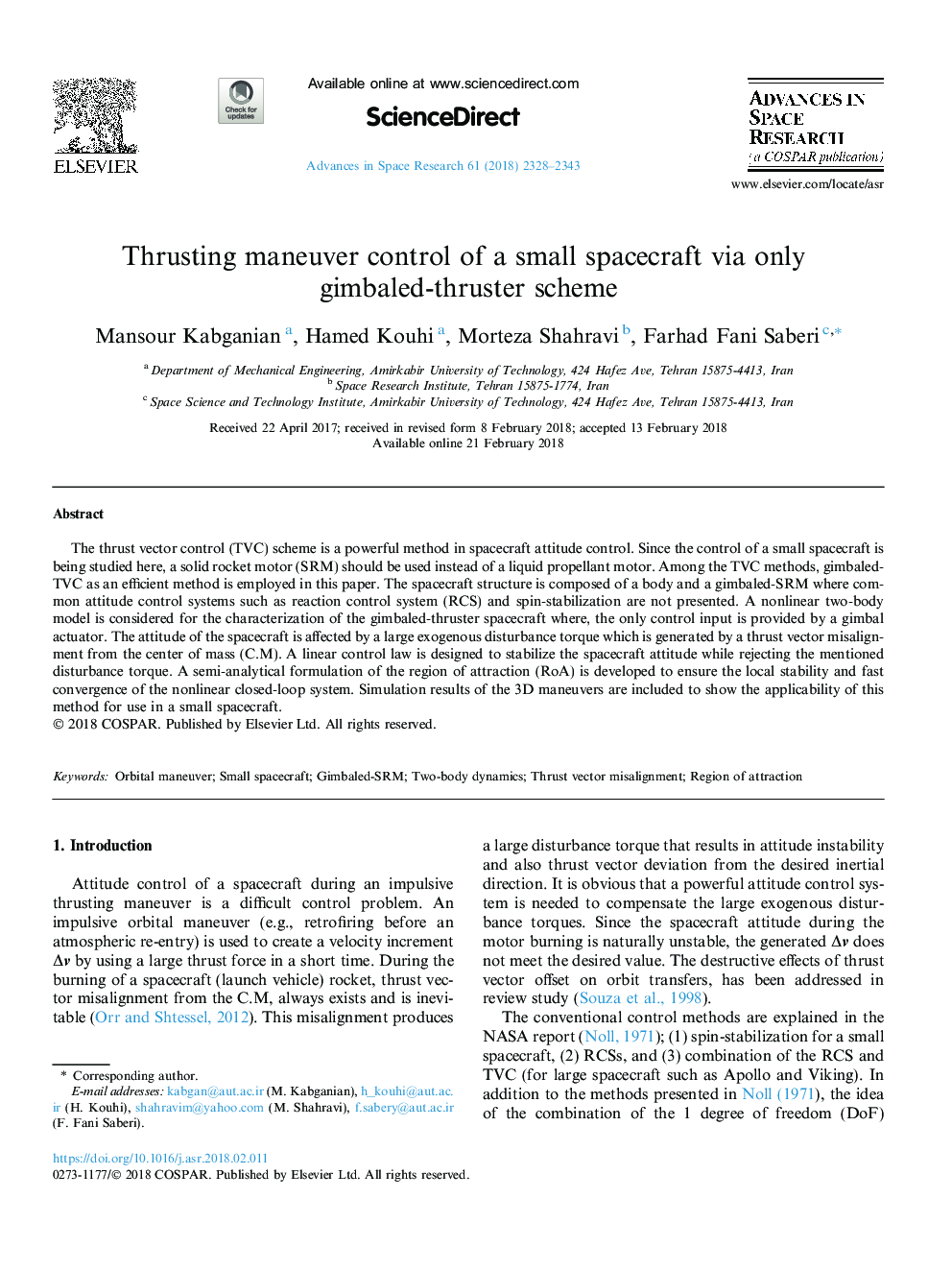| Article ID | Journal | Published Year | Pages | File Type |
|---|---|---|---|---|
| 8131981 | Advances in Space Research | 2018 | 16 Pages |
Abstract
The thrust vector control (TVC) scheme is a powerful method in spacecraft attitude control. Since the control of a small spacecraft is being studied here, a solid rocket motor (SRM) should be used instead of a liquid propellant motor. Among the TVC methods, gimbaled-TVC as an efficient method is employed in this paper. The spacecraft structure is composed of a body and a gimbaled-SRM where common attitude control systems such as reaction control system (RCS) and spin-stabilization are not presented. A nonlinear two-body model is considered for the characterization of the gimbaled-thruster spacecraft where, the only control input is provided by a gimbal actuator. The attitude of the spacecraft is affected by a large exogenous disturbance torque which is generated by a thrust vector misalignment from the center of mass (C.M). A linear control law is designed to stabilize the spacecraft attitude while rejecting the mentioned disturbance torque. A semi-analytical formulation of the region of attraction (RoA) is developed to ensure the local stability and fast convergence of the nonlinear closed-loop system. Simulation results of the 3D maneuvers are included to show the applicability of this method for use in a small spacecraft.
Related Topics
Physical Sciences and Engineering
Earth and Planetary Sciences
Space and Planetary Science
Authors
Mansour Kabganian, Hamed Kouhi, Morteza Shahravi, Farhad Fani Saberi,
